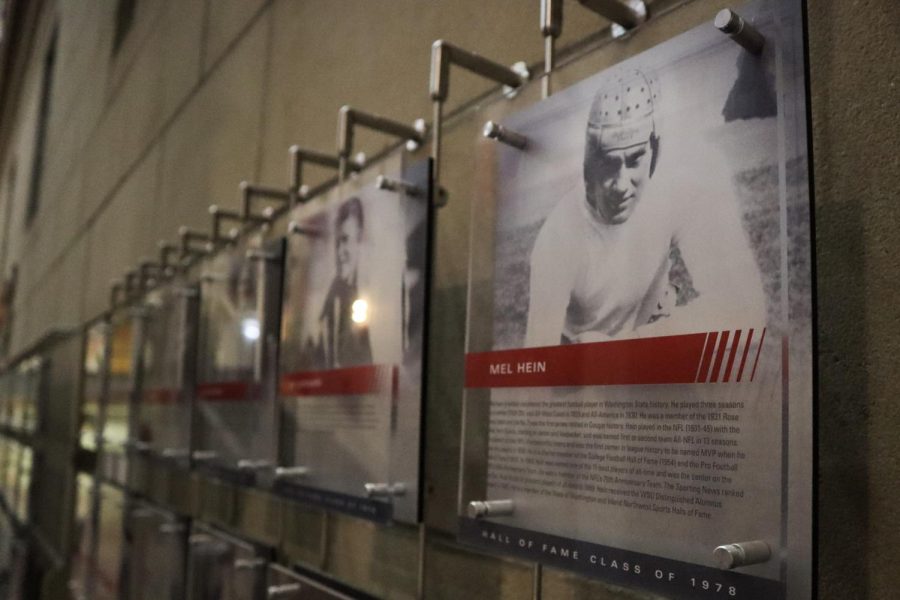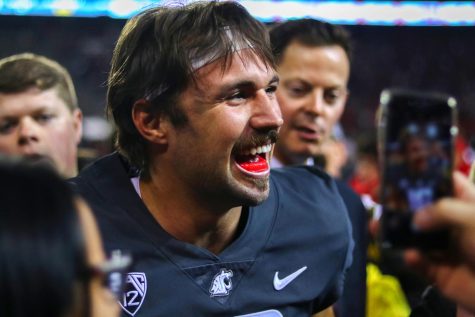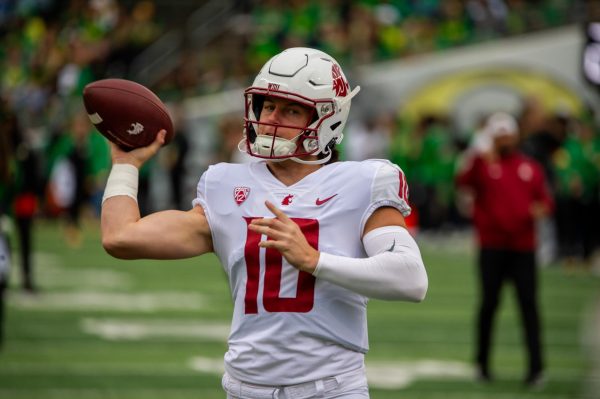The greatest Coug: a tribute to Mel Hein
A college and pro football Hall of Famer; 30 years after his death
October 31, 2022
The most popular WSU athletes of all time include Gardner Minshew, Klay Thompson, Ryan Leaf, John Olerud and Morgan Weaver.
But the most outstanding athlete in the school’s history is none of these athletes; it is the late Mel Hein. Although not playing in the most prestigious position, Hein left a legacy from his time in the Crimson and Gray and further solidified his legacy with his time in the NFL.
Hein played for the Cougs for three seasons, from 1928-30. He was the center on offense and linebacker on defense, which was also known as the center at the time. The 1930 Cougs went undefeated and were in the Rose Bowl; it was one of the greatest teams in the school’s history.
Following his time in Pullman, his No. 7 was the first number retired by the university, signaling the impact he had made during his short time.
Once he graduated, the next logical step for Hein was to enter the NFL, even if it was still in its infancy. Back then, there was no draft; instead, teams could offer players contracts. Even with his stellar collegiate career, he had to be proactive and write to teams to provide his services.
The first team to offer a contract was Providence, offering $135 a game. Hein bit, but once he learned that the Giants would up his pay to $150, he tried to retrieve his contract in the mail to destroy it.
Hein succeeded in his plan and signed with the Giants for the higher wage of $150 per game.
That started his NFL career that would span 15 seasons. His talent was immeasurable in his 15 seasons. He was an All-NFL player in 13 of them. The All-NFL recognizes the two best players at every position, meaning that Hein was a top two player at his position for essentially his entire pro career.
From the very beginning, his talent was obvious and teams were aware of who he was.
Even as a rookie in 1931, no one was like him; usually, you look for the rookies on another team and try to take advantage of them.
“We tried working on Hein, but from the beginning, he was too smart,” said George Halas, former owner and coach of the Chicago Bears in a New York Times article.
Not only was he a perennial All-Pro, but he was also the first NFL MVP in 1938, an award that historically never goes to a lineman.
His talents were not wasted, as he would be a part of two championship-winning teams in 1934 and his MVP campaign of 1938.
Just like at WSU, his No. 7 was retired by the Giants following his playing career. Due to his impact at both levels, he was inducted into the College Football Hall of Fame in 1954 and the Pro Football Hall of Fame in 1963.
The accolades kept coming for Hein as he was a part of the NFL’s 50th Anniversary Team and later the 75th Anniversary Team. Finally, he was named the best 100 players in the league’s history in 2019 for its 100th Anniversary.
“The Giants have had some great players, but I always like to be able to tell people that I saw Mel Hein play,” said a longtime season-ticket holder during the 1992 season in a New York Times article.
Despite not being a household name, even at WSU, his legacy will live on as a representative of the culture WSU looks to uphold for its football and athletics programs.



















